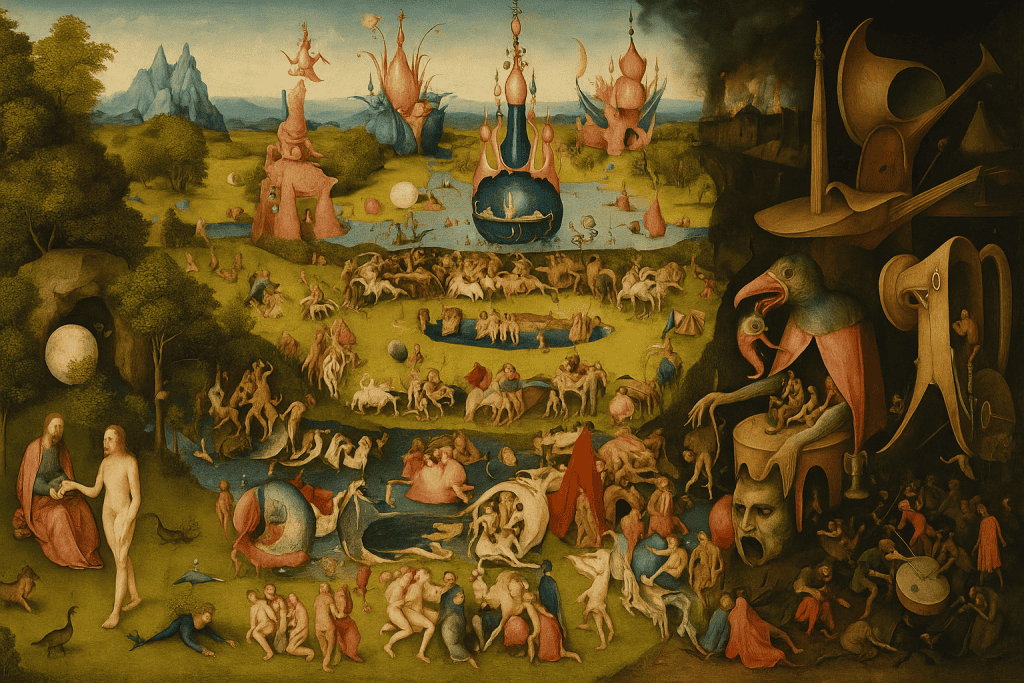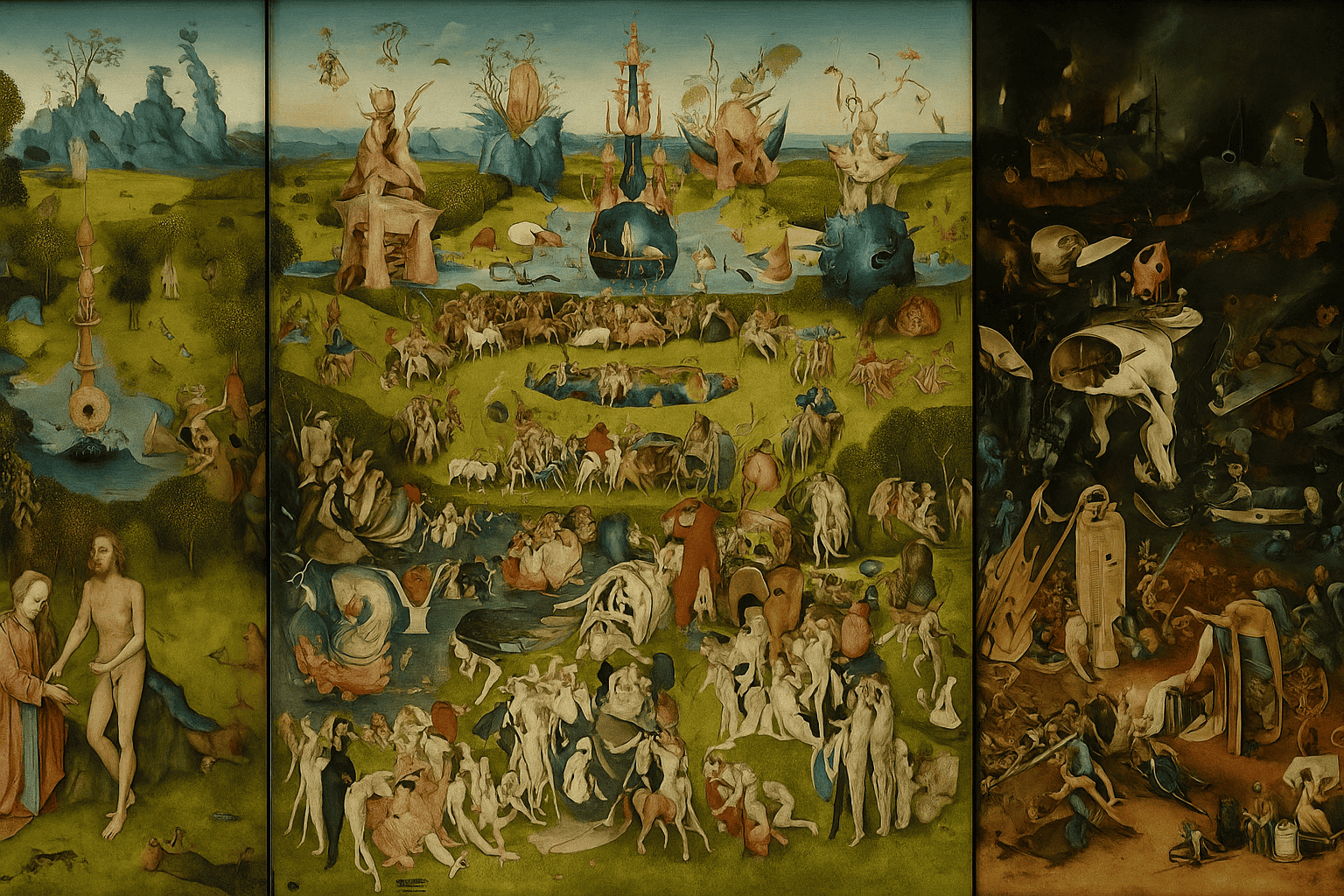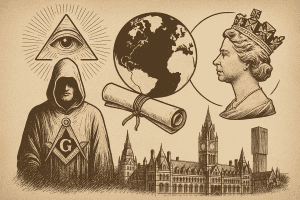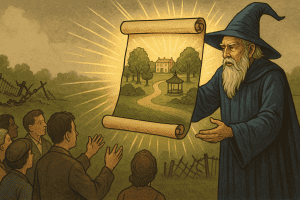Introduction: Beyond Medieval Morality
Hieronymus Bosch’s Garden of Earthly Delights (c. 1500) is one of the most haunting and mysterious artworks in history. At first glance, it looks like a Christian morality tale: humanity falls from Eden’s innocence into indulgence and ends in hellfire.
But look closer, and Bosch’s strange creatures, oversized fruit, and musical tortures point to something far more esoteric. Through a Gnostic lens, the triptych becomes not just a warning about sin, but a cosmic diagram. Bosch reveals how frequency and sexual energy — the most primal forces of creation — can be twisted into instruments of entrapment.
The Left Panel: A Flawed Creation
On the left, God presents Eve to Adam in the Garden of Eden. Yet the scene is already off. Strange animals wander the landscape. An owl peers from the central fountain-tree, a medieval symbol of hidden knowledge or lurking corruption.
From a Gnostic perspective, this “God” may not be the true Source at all, but the Demiurge — the craftsman of a flawed world. Even in paradise, the seeds of distortion are already planted. Creation itself hums with a frequency slightly out of tune.
The Central Panel: The Song of the Flesh
The famous middle panel overflows with naked figures cavorting in surreal landscapes. People ride on fantastic beasts, bathe in pools, and nibble at giant berries. To the casual eye, it’s a carnival of pleasure.
But notice: the figures show no intimacy or individuality. They are mechanical, caught in cycles of lust, fruit-gathering, and endless play.
Esoteric reading:
- Sexual energy is the raw force of creation, capable of awakening gnosis when directed inward and upward.
- In Bosch’s vision, that same energy is hijacked — multiplied and scattered outward. Instead of liberating the soul, eros binds it to material cycles.
- The oversized fruit symbolizes desire at its most tempting, but also most fleeting — sweetness that quickly rots.
Here, frequency and eros merge: pleasure becomes a vibratory trap, a song of the flesh that drowns out the song of the spirit.
The Right Panel: Hell’s Frequency Inversion
In the final panel, the seduction of the center is revealed as a nightmare. Known as the “musical hell,” this scene is packed with torments involving giant instruments. Strings stretch victims, flutes are inserted grotesquely, drums crush bodies.
Why music? In medieval thought, cosmic harmony — the “music of the spheres” — was seen as divine order. Bosch inverts this idea: the very instruments of harmony become tools of suffering.
This is a perfect Gnostic metaphor: the Demiurge’s world mimics divine resonance, but it is off-key — a counterfeit frequency grid. Souls who followed the false song of pleasure now find themselves trapped in its dissonance.
Sexual torment abounds as well, with grotesque couplings and perversions. The creative force of eros, instead of elevating, becomes the engine of bondage.
Sidebar: The Synchronicity of Bosch and Sound
It’s worth noting a curious synchronicity. Today, the name Bosch is most widely recognized not for the painter, but for the German engineering company known for its precision tools and audio systems. The company has no direct link to Hieronymus Bosch — it was named after its founder, Robert Bosch (1861–1942).
And yet, the resonance is uncanny.
- Bosch the painter envisioned Hell as a prison of twisted instruments and corrupted frequencies.
- Bosch the company, centuries later, became globally associated with sound, vibration, and engineered frequencies.
Whether coincidence or archetypal echo, the name Bosch continues to carry the vibration of frequency — from medieval visions of torment to modern systems of communication.
Bosch’s Hidden Message: A Frequency Prison
Seen through esoteric eyes, Bosch’s triptych is not simply Christian moralism. It is a visionary map of the soul’s descent:
- Creation (Left Panel): The Demiurge’s flawed paradise, already seeded with distortion.
- Pleasure (Center Panel): Humanity entranced by eros and false resonance.
- Torment (Right Panel): The unveiling of the trap — music and sex inverted into prisons.
Bosch may not have consciously intended a Gnostic cosmology. Yet like a dreamer channeling the collective unconscious, he encoded timeless truths. His imagery anticipates modern ideas of energy, vibration, and resonance — reminding us that the wrong frequencies can enslave, while true harmony leads back to liberation.
Reflection: Awakening in the Modern World
Bosch’s imagery doesn’t just belong to the past — it speaks directly to the present. Today, the language of “raising one’s frequency” has become central in spiritual practice and modern awakening. His triptych can be read as a reminder of why this matters.
- Raising frequency: Living in clarity, compassion, and awareness allows us to vibrate at a higher state, aligning with truth rather than illusion.
- Attention as energy: Where focus goes, energy flows. Like the figures in Bosch’s center panel, if our attention is trapped in endless distraction and desire, we fuel the wrong resonance. Protecting our focus is protecting our soul.
- Sacred use of energy: Sexual and creative energy, when scattered, binds us to cycles of pleasure and decay. When cultivated inwardly, it becomes the very ladder of awakening.
Even in the age of technology, Bosch’s vision holds. Both water and artificial intelligence follow the path of least resistance — flowing where they are guided. Humans face the same choice: drift with the easy current of distraction, or consciously direct our current toward higher harmony.
Bosch may not have known he was painting a map for awakening, but his work still whispers the same timeless truth: frequency, focus, and the sacred use of energy decide whether we remain trapped — or rise beyond the prison.

FAQs: The Hidden Meaning of Bosch’s Garden of Earthly Delights
What is the hidden meaning of Bosch’s Garden of Earthly Delights?
While traditionally seen as a Christian warning against sin, many scholars and seekers read the triptych as an esoteric map of the soul. It shows humanity’s descent from a flawed creation into distraction, indulgence, and finally entrapment in a false frequency grid.
Why are there musical instruments in Bosch’s Hell panel?
The instruments symbolize frequency inversion. In medieval thought, music represented divine harmony — the “music of the spheres.” Bosch twists this symbol: instruments of joy become instruments of torment, showing how pleasure can mask bondage.
What does the fruit mean in the central panel?
The oversized fruit represents desire and temptation. Sweet and seductive, yet quick to rot, it symbolizes fleeting pleasures that trap humanity in cycles of lust and distraction.
Is Bosch’s Garden of Earthly Delights Gnostic?
Though painted in a Christian context, the imagery resonates strongly with Gnostic themes. The left panel reflects a flawed creation by the Demiurge, the center shows humanity lost in material illusions, and the right reveals the prison of false resonance.
How does Bosch’s work connect to modern awakening?
Today, many speak of raising one’s frequency to align with higher consciousness. Bosch’s triptych foreshadows this truth: guarding our attention, protecting our energy, and directing sexual/creative force inward are keys to awakening beyond illusion.
Before saving, open your browser’s print dialog and turn off Headers and footers (the title and URL line).
Chrome / Opera / Edge: Menu → Print → uncheck Headers and footers • Firefox: More settings → turn off Print headers and footers • Safari: already clean


